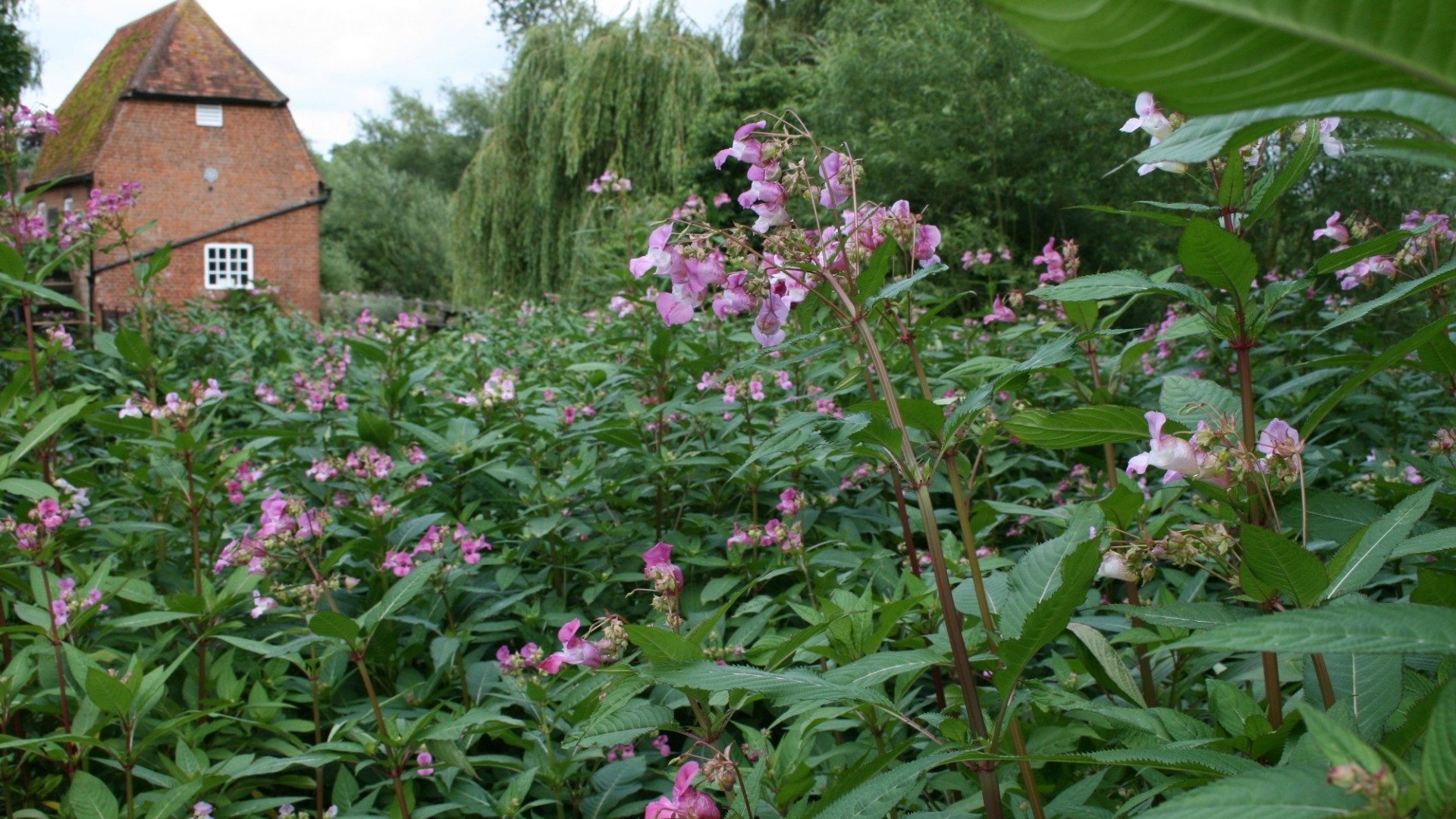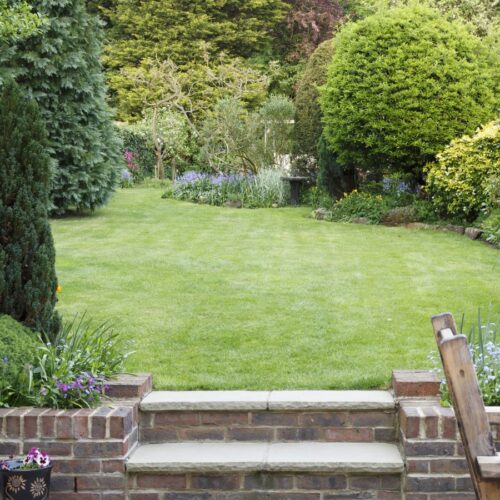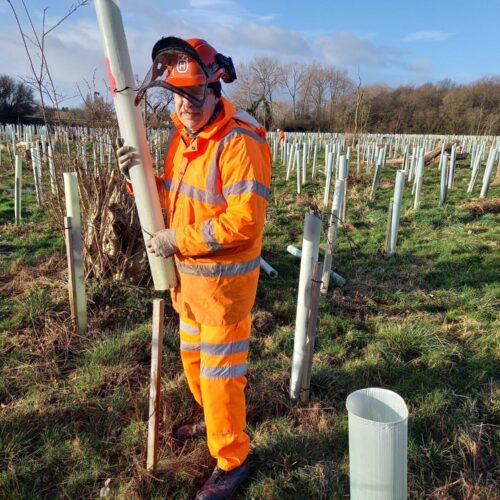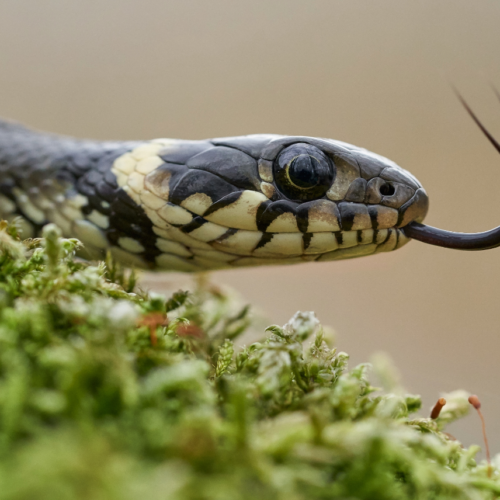In the UK we spend millions of pounds each year purchasing ornamental plants for domestic and commercial landscaping. Although the control of the sale and distribution of invasive ornamental species has been vastly tightened over the past few decades, unfortunately this has not always been the case. Two species that have affected the UK the most are Japanese knotweed, and Himalayan balsam.
Japanese knotweed (Fallopia japonica)
Japanese knotweed was brought to Britain from Japan as an ornamental garden plant in the mid-nineteenth century. However, over time it has become widespread in a range of habitats, particularly roadsides, riverbanks and derelict land where it can cause serious problems by displacing native flora and causing structural damage.
Facts and figures
- It can grow more than a metre a month and can for push through tarmac, concrete and drains.
- The underground rhizomes can stretch up to seven metres from the parent plant and down to a depth of three metres.
- It can grow to a height of two to three metres.
Japanese knotweed thrives on disturbance. Pieces of rhizome or stem can be spread by fly tipping, and can be carried by waterways, especially after heavy rains or flooding. This is why clusters of Japanese knotweed are often found on riverbanks, roadsides and redevelopment sites.
The rhizomes can lie dormant in the ground for up to 20 years, only re-growing when disturbed. Laboratory tests have shown fragments as small as 0.7g can re-grow.
Japanese knotweed is still spreading rapidly, despite our best efforts. Since its introduction the species has spread throughout the British Isles; only the Orkney Islands are exempt.
Its distribution also covers much of mainland Europe from southern France and northern Italy to Norway. Beyond Europe it is found in many states in the USA from California to Washington and throughout Canada and is increasingly being reported as a nuisance weed in New Zealand and Australia.
Timing of treatment works
Herbicide treatment of Japanese knotweed should take place when the plant’s new growth has become established. This is so there is sufficient leaf cover for the herbicide to be taken in. But, it should not be left too late so that the plant stems become too tall or thick making it hard for an operative to reach or climb through. This first treatment is usually carried out in June or July.
Approximately two weeks following the first treatment, the leaves of the plants begin turning yellow and the plants stems begin to droop as they take in the herbicide.
The second herbicide treatment should ideally take place at the end of the summer in September or early October.
If the stand of Japanese knotweed, or the area around the stand that could potentially contain roots and rhizomes, is to be disturbed, then the knotweed should be excavated and
- Bunded on site, if there is enough space, and treated with herbicide moving forwards
- Buried on site within a sealed ‘cell’ made from root barrier membrane – again if there is enough space, or
- Removed by a registered waste carrier from site to a licensed tip. As this is a costly exercise, this is generally only financially viable to do with small amounts of contaminated soil, i.e. when there are few stands of Japanese knotweed, and when the stands are relatively small in size.
Himalayan balsam (Impatiens glandulifera)
Himalayan balsam was introduced to Britain in 1839, but spread from gardens and rapidly colonised riverbanks and areas of damp ground. It grows in dense stands that suppress the growth of native grasses and other flora. In the autumn, the plants die back, leaving the banks bare of vegetation and vulnerable to erosion. It spreads by seed dispersal, and seeds are usually carried by a watercourse, spreading plants down the catchment area. In other areas, it can be spread by wind, passing traffic, wheels, boots and livestock.
Facts and figures
- Native range: Western Himalayas
- Stem: Pinky-red colour, up to three meters tall – tallest annual plant in Britain, hollow and jointed, sappy and brittle
- Leaves: Spear-shaped, with serrated edges, shiny and dark green with a dark red midrib, up to 150mm long, opposite or in whorls of three
- Flowers: Purplish-pink to pale pink, slipper-shaped, on long stalks, June – October
- Seeds/pods: Seeds are white, brown or black, form after flowering between June and October, pods are 20-30mm long x 8mm broad, four to 16 seeds per pod, seed pods explode when disturbed, scattering seeds up to seven meters from the plant.
Timing of treatment works
Herbicide treatment should commence at the beginning of the growing season, between June and October, and be complete prior to the plant setting seed.
The seeds can lie dormant in the ground for up to 18 months so treatment may have to continue for two or more years to eradicate the seed bank that has built up in the soil from previous growing seasons.
The plants can also be cut to prevent the seed pods forming. As with the herbicide treatment, this should happen before the seed pods have formed, and the stems should be cut below the lowest node and stored on a hard surface or root-proof membrane, otherwise the plant can re-grow from the same stem. Cutting can be done by hand, using brushcutters, or done mechanically using flails. Unlike Japanese knotweed, these methods can be used because the plant can only re-grow from seeds, and not from fragments of stem or leaves (unless a whole plant, or a substantial piece of stem with a node, is pulled out and left on open ground where it might produce new roots from the nodes).
If the stand of Himalayan balsam, or area contaminated by its seeds is to be affected by groundworks, then the uppermost 300mm of the soil containing the seeds can be excavated and set aside for herbicide treatment at a later date. If space on site will not allow for this, then it can be removed by a registered waste carrier to a licensed tip.
If you have invasive plants on your land or development site, and would like advice, please get in touch on 01483 466 000 or [email protected]











